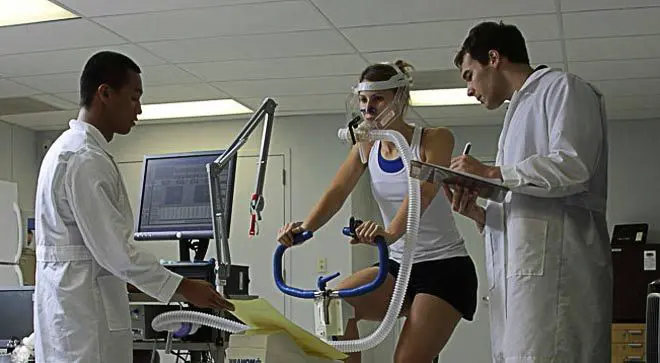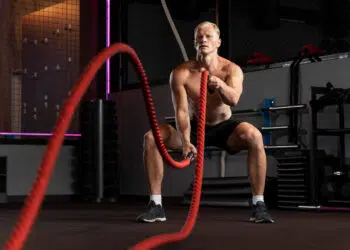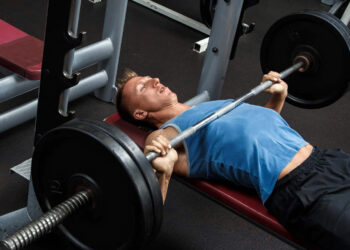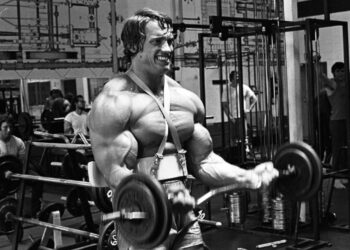Should You Be Doing High-Intensity Interval Training or Low-Intensity Steady State Cardio?
There are still people who insist that cardio alone is enough to change your body shape, burn fat and help you lose weight. However, we now know that bodies are much more complicated than this and that it takes much more hard (and varied) work if you want to actually lose fat and implement change.
Unfortunately, there are still people who don’t listen to or know about these new findings. There are thousands of people who think that they can sit on an exercise bike and cycle their way through an hour of X Factor and see life changing results. Whilst these people will see some results (an hour of regular exercise will do that) it isn’t the best way to get the most out of our exercise regime. If you’re going to put in hard work then surely it makes sense that you look at the most effective methods and go from there?
In this article, we will be looking at HIIT and LISS cardio – which are probably the two most used methods of cardio. We’ll look at what they are, how they can help you and which is going to be the most effective for you.
HIIT – High-Intensity Interval Training
This involves short (or short-medium) bursts of very intense exercise followed by brief low-moderate intensity exercise for recovery.An example of this would be a 30-45 second sprint followed by a minute of steady walking and then repeat. This technique can be applied with lots of other exercises besides sprinting, so keep it fresh.
LISS – Low-Intensity Steady State Cardio
This is where you do exercise at a level that you could maintain indefinitely, or until you get bored; this is one of the issues with LISS you could be doing it all day. However, when taking part in LISS then you should be constantly cycling for at least 30-45 minutes (can go on for hours). That’s for a low to moderate work out, if you do want to see better progress then you will have to learn to put some more time in with it.
Lactate Threshold (LT) and Anaerobic Threshold (AT) Testing
Level Up Your Fitness: Join our 💪 strong community in Fitness Volt Newsletter. Get daily inspiration, expert-backed workouts, nutrition tips, the latest in strength sports, and the support you need to reach your goals. Subscribe for free!
When it comes to looking at how effective aerobic exercise is, AT and LT are very good powerful indicators. The LT is defined as the point at which lactic acid production becomes greater than the rate at which it is cleared, it helps to identify the upper limit to which we are able to exercise at. Ideally, when training in an aerobic state you want to be working at your maximum lactate steady state (mlss). This mlss is the maximum workload your body will able to aerobically as it is the highest blood lactate concentration and workload that can be maintained over a long period of time without a continuing consistent build-up of lactate. The AT is the point at which blood lactate levels increase to 4mmol/l. It is essentially the point where aerobic exercise stops and where anaerobic exercise begins. If we measure these we are able to see how hard someone is working in relation to the exercise intensity.
Despite LT and AT testing being very useful and a good indicator to show you what intensity you should be working aerobically; it is not practical. Very few places have machines that will measure lactate within blood samples. All the testing and practical work I have done utilizing these methods were done in a laboratory. My advice, if you do have access to these machines then make the most of it, if not; then you’re going to have to figure it out by trial and error.
Can You Change Your Metabolism?
Changing Your Metabolism
If you want to change your metabolism then the first step is to increase your muscle mass. By doing this you are increasing your muscles oxidative capacity as with an increase in muscle mass means you’ll have more energy-producing mitochondria, to speed up your metabolism. The more mitochondria units you have and the more active they are the better fat loss results you’ll have thanks to a greater oxidative capacity. However, this muscle mass increase can take a while to produce. Although, increasing muscle mass isn’t the only way to increase mitochondria within the muscle. Regular and consistent aerobic LISS workouts also provide an adaptation of increasing mitochondria as your body has a higher demand for oxidation phosphorylation which causes muscles to create more.
When you work out with a LISS work out, you’re only burning calories right there and then. Unlike HIIT you don’t get a 24-hour energy expenditure, which is what usually gives you a boost in metabolism. When you partake in a HIIT work out, you burn calories at that moment but you carry on doing so after the work out too thanks to the change in your muscles metabolism. You do increase your muscles oxidative capacity which means that you burn more calories. However, when you are undertaking this type of workout you have to be prepared to put in the hard work. A work out like this will hurt if it hurts then you’re doing it correctly!
LISS
This means that you need to mix and match your workouts. It is unrealistic to think that you will be able to do 5-6 HIIT workouts a week. Rather than skipping a day’s work out altogether you can mix it up with LISS. If you have medical reasons not to do HITT then you can still go for LISS workouts.
Before you attempt anytime of HIIT you should make sure that you look up how to do this properly and even get advice from a personal trainer. What you don’t want to do is sit there and say 6 high-intensity muscle reps are better than 10 low-intensity ones, because as a general blanket rule that is not the case at all. Instead, you want to look at both types of workouts and how to find room for them both in your routine.
In Conclusion
If you have a preference over the two and enjoy one much more than the other then stick with that – after all your far more likely to be motivated to do something that you enjoy! However, if your primary motivation is fat loss then HIIT is going to be much quicker. That said, LISS is just as effective but is more time-consuming.Not everyone is able to do HIIT so don’t beat yourself up if you struggle with it – it is hard work! Especially if you are very unfit – you could always start with LISS and work your way up to HIIT.
The purpose of this article is simply here to provide you with the information that you need to make an informed decision between the two and choose the best type of work out for you in your current state, for more information regarding HiiT and LISS training stay tuned.









